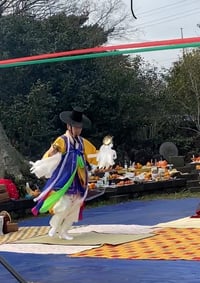 Heesun Kim is a bright presence in our Ph.D. program for Integrative Therapy and Healing Practices, where her studies focus “on exploring the critical connections between psychology, spirituality, and holistic healing practices.” She has recently been honored as a semi-finalist in the Fulbright program. Many alumni of the program have gone on to become winners of the Nobel Prize and Pulitzer Prize, as well as serving as heads of state. Heesun’s proposal is titled “Jeju Shamanism: Healing Intergenerational Trauma through Collective Mourning” and I’m delighted to discuss it with her.
Heesun Kim is a bright presence in our Ph.D. program for Integrative Therapy and Healing Practices, where her studies focus “on exploring the critical connections between psychology, spirituality, and holistic healing practices.” She has recently been honored as a semi-finalist in the Fulbright program. Many alumni of the program have gone on to become winners of the Nobel Prize and Pulitzer Prize, as well as serving as heads of state. Heesun’s proposal is titled “Jeju Shamanism: Healing Intergenerational Trauma through Collective Mourning” and I’m delighted to discuss it with her.
Angela: Heesun, thank you so much for talking with me. You’ve said that your Fulbright project, if accepted, would “focus on how Jeju shamanism addresses intergenerational trauma and collective mourning as a community healing practice.” Please tell us a little bit about Jeju shamanism and how it intersects with your own family history in Korea. Is it a topic you found during your studies at Pacifica or is it something you’ve been aware of for a long while?
Heesun: Thank you for inviting me, Angela. Jeju is a beautiful island located in the southern part of South Korea. Unlike most of the mainland Korean regions, which have nearly lost their shamanic tradition due to rapid industrialization and western influences, Jeju Island still preserves the shamanic tradition through myths, folksongs, and oral traditions in rituals. The island has a tragic history of a massacre between 1948 and 1954; approximately 30,000 civilians were killed when Korean authorities and right-wing vigilantes, with the US military's compliance and oversight, brutally suppressed a popular uprising.
Unfortunately, the April 3rd Uprising and Massacre had been a taboo topic of conversation for a very long time. The government systematically concealed the event and silenced the people. The grief and proper mourning were disfranchised, and the suffering has been passed down from generation to generation. Only recently, almost ten years ago, did the government acknowledge this tragedy publicly. Most victims have passed away, leaving only a handful of survivors. The April 3rd Uprising and Massacre changed the island's relationship to the dead, and Jeju shamanic practice has been incorporated as a healing practice to address the intergenerational trauma resulting from the massacre.
I was born and raised in Seoul, South Korea, and my father was a North Korean refugee. In 1950, he escaped from communist North Korea, leaving his parents and sisters behind. He promised them that he would go back to get them but could not keep his promise for the rest of his life. My father was traumatized during the war and unfortunately suffered throughout his life without any proper treatment. He was always angry and often violent at home in South Korea. However, I have an unforgettable memory of witnessing him crying. One summer night in 1983, he watched a special live broadcast program called, "Finding Dispersed Families: Does Anybody Know This Person?"
On the TV screen, hundreds of North Korean refugees held picket signs with their personal and loved one's information. The sight of this turned my big angry father into a tiny young boy. I saw tears rolling down my father’s face ceaselessly. I could not understand the meaning of his tears at all at that time. Now, I am almost the same age as my dad was then, and I finally understand his crying and untold grief.
The broadcast, initially planned for live 3 hours, lasted 134 days and reunited more than 10,000 families separated by war. Unfortunately, my father could not find his parents nor sisters, but he watched the program all 134 days with tears. In retrospect, it was my first witnessing moment of healing from collective mourning. Then this memory had been somehow buried in my unconscious until psyche summoned it when I started researching my dissertation topic related to Trauma and grief.
Angela: Your research begins with the understanding that “shamans have treated mental, as well as physical, ailments for centuries.” In many ways, shamanic roles across cultures share the commonalities of piercing the veil between us and the unknown, our maladies and their cure, our hearts and their healing. Although these shamanic cultures are vibrant and alive today, they were particularly important in times when we had no hospitals, no psychologists, none of the current scientific “understanding” of the rules that govern this world. I find it fascinating that you are looking through the lens of modern psychology at a healing and cultural tradition, the Jeju, that has been in existence for hundreds of years. How do you perceive the connection between depth psychology and Jeju shamanism?
Heesun: There appears to be some connection between depth psychology and Jeju shamanism. Both explore unconscious psyche, synchronicity, numinous experience, and Anima Mundi, the soul of the world. In Siberia and Far East Asian regions, the shaman's role has been mainly focused on healing the mind, body, and spirit for more than two thousand years and until the last few decades. If we were to inquire of modern psychotherapists' origins or ancestry, we would encounter shamans' foot trace throughout human history. Some of them are still alive and continue working as devoted healers and I think Jeju shamans are some of them.
Angela: Not to be too cheeky, but is there a comparison to be made between psychologists shamans? What can psychologists learn from these time-honored traditions and apply in their practice?
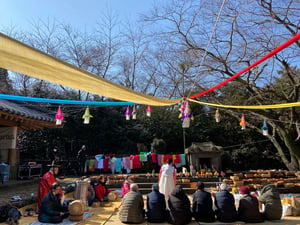
Heesun: Right before the pandemic, fortunately, I had two recent field trips to East Asia and visited six shamans at their sacred lands and ritual shrines in Siberia, Mongolia, and Korea. These shamans have several shared experiences; each became a shaman due to a severe medically untreatable sickness called "shaman sickness" or inherited from their family a firm belief that they were destined to be healers. Their healing moment arrives when they are in a trance with ancestral spirits. They all have a close connection with nature and actively use it as a co-therapist. They have a deep range of empathy toward the people they are treating; shamans mourn with the utmost care for those who have suffered, whether they are dead or living. Lastly, most rituals are closely tied to community-based collective mourning.
These ideas are based on my short-term preliminary exploration, though. There are so many things to learn, and I hope to gain more knowledge and insight and give more tangible answers to your questions. At this point, I would say, some aspects of shamanism can be applied to contemporary healing practices, the Eco psychological approach, and community-based healing work. Some of these aspects are cultivating deep empathy toward the people in treatment and trusting intuition and calling to become a wounded healer.
Angela: If you’re selected as a finalist for the Fulbright, what will your research look like? Will you be living in Korea, doing field work, continuing your studies at Pacifica, etc?
Heesun: The research will be an ethnographic study and I plan to stay in Jeju Island for one year and do fieldwork, filming shamanic rituals, and conducting interviews with shamans, massacre survivors, and victims' families. One of the proposals in the Fulbright grant is creating a Grieving Tree event around April with the local shamans, community members, and non-profit organizations. I am also thinking about making an animation production related to the Jeju 4.3 massacre based on interviews and active imagination, hopefully collaborating with the local Jeju artists.
Angela: You’ve said that you hope your research will “contribute to an effort to tend to the world's suffering in recovery from the pandemic.” I think this brings up the question that all psychologists and medical professionals will shortly need to tackle, namely how to process and heal from a world-wide event that has the potential to be a source of intergenerational trauma, if not addressed now. How do you see Jeju shamanic practice and your research as the means of transformative healing as we begin to take off our masks and feel that we can go back out into the world again? In some way, have we as a collective just spent the last year in the underworld? How would Jeju shamanism frame this?
Heesun: Before embarking on this research, I had worked with the trauma patients from the homeless shelters for a few years, primarily underserved people of color in NYC. Unfortunately, most patients have suffered severe complex trauma and exposure to ongoing violence, from generation to generation, which led to severe PTSD symptoms, depression, or anger issues, often exhibited unprocessed prolonged grief and inability of mourning. I witnessed how individuals can heal from trauma in collective mourning processes when addressed in the cultural dimension of suffering: acknowledging and understanding each patient as a member of a complex cultural environment, not an isolated individual with psychopathology. It also helped me search for a universal commonality as well.
Looking through the window of the traditional Eastern cosmology, death in the East has never been separated from the living but somehow embodied in everyday life, in my opinion. Dead ancestors were believed to watch over their offspring's affairs. In Korean/Jeju shamanism, those who have died by violence, accidents, warfare, and pandemics, as well as those who have committed suicide, are all categorized as "wonhon," spiteful souls. They are the dead who could not be given typical funeral ceremonies. Due to their tragic life and death, they are condemned to roam the earth and have harmful effects on their offspring, impacting their emotional and physical welfare negatively. Functioning as spirit mediums, the village shamans receive the dead souls who speak through them to their gathered family and community members. So, most shamanic rituals console the dead's spirit with their family's presence and also provide a safe healing space for the family members to process their loss and mourning with each community member as a witness and a container. As a result, it often transforms into one of the viable healing practices for the whole community.
I think the unforeseen tragic circumstances during COVID-19 have created a shared experience of suffering that activates and deepens humanity and empathy toward one another. Although we have physically distanced more than ever, the pandemic also has brought people closer, as we see so many collective actions and voices that have been silenced for a long time. Of course, we also have to take a close look at that which divides us, such as the current surge of hate crimes and xenophobia. Hopefully, we can bring more conscious light to this shadow, which we have overlooked and untended for a long time, and make meaningful change and social healing.
I hope this research can broaden the scope of contemporary bereavement modalities and explore the possibility of bridging Jeju shamanic tradition into Western practices related to trauma, death, disenfranchised and prolonged grief, and collective healing.
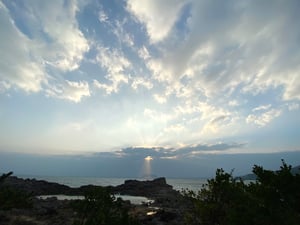 Angela: Everyone at Pacifica is immensely proud of your work here. How have your studies at Pacifica shaped or influenced your progression as a therapist and a scholar?
Angela: Everyone at Pacifica is immensely proud of your work here. How have your studies at Pacifica shaped or influenced your progression as a therapist and a scholar?
Heesun: I can’t find enough words to express my gratitude. Since joining this program, I have learned so much about depth psychology from amazing and inspiring teachers. The program's transdisciplinary approach has been flexible enough to contain all of my interests and deepen the inquiries inside and out. I have been nurtured and grown as a therapist and a practitioner-scholar, and I deeply appreciate being part of Pacifica. After graduation, I hope to teach and continue working on my research while deepening community-based trauma healing practices into purposeful work with diverse and marginalized communities.
Angela: Thanks very much for your time in speaking with me. We wish you the best of luck in your Fulbright application and future research.
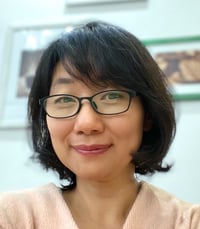 Heesun Kim, LCSW, is a psychotherapist in private practice with a background in clinical social work and creative art. She is currently a third-year student in Pacifica's Ph. D. Program in Depth Psychology with a specialization in Integrative Therapy and Healing Practices. She holds a Master of Social Work (MSW) from the Silberman School of Social Work at Hunter College in CUNY, New York and a Bachelor of Fine Arts (BFA) from The School of the Art Institute of Chicago. Heesun Kim worked at the Floating Hospital Mental Health Clinic and the Korean American Family Service Center (KAFSC) as a trauma therapist and worked with patients in homeless shelters and domestic violence safe haven houses in NYC. In 2015, she created the grief space, a temporary public art installation in New York City, and in 2019, she facilitated the Grieving Tree event at Pacifica's Lambert campus. Heesun Kim is a Somatic Experiencing (SE) Trauma practitioner and certified yoga teacher at Integral Yoga Institute (IYINY).
Heesun Kim, LCSW, is a psychotherapist in private practice with a background in clinical social work and creative art. She is currently a third-year student in Pacifica's Ph. D. Program in Depth Psychology with a specialization in Integrative Therapy and Healing Practices. She holds a Master of Social Work (MSW) from the Silberman School of Social Work at Hunter College in CUNY, New York and a Bachelor of Fine Arts (BFA) from The School of the Art Institute of Chicago. Heesun Kim worked at the Floating Hospital Mental Health Clinic and the Korean American Family Service Center (KAFSC) as a trauma therapist and worked with patients in homeless shelters and domestic violence safe haven houses in NYC. In 2015, she created the grief space, a temporary public art installation in New York City, and in 2019, she facilitated the Grieving Tree event at Pacifica's Lambert campus. Heesun Kim is a Somatic Experiencing (SE) Trauma practitioner and certified yoga teacher at Integral Yoga Institute (IYINY).
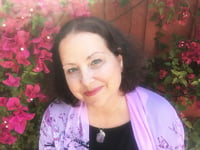 Angela Borda is a writer for Pacifica Graduate Institute, as well as the editor of the Santa Barbara Literary Journal. Her work has been published in Food & Home, Peregrine, Hurricanes & Swan Songs, Delirium Corridor, Still Arts Quarterly, Danse Macabre, and is forthcoming in The Tertiary Lodger and Running Wild Anthology of Stories, Vol. 5.
Angela Borda is a writer for Pacifica Graduate Institute, as well as the editor of the Santa Barbara Literary Journal. Her work has been published in Food & Home, Peregrine, Hurricanes & Swan Songs, Delirium Corridor, Still Arts Quarterly, Danse Macabre, and is forthcoming in The Tertiary Lodger and Running Wild Anthology of Stories, Vol. 5.



